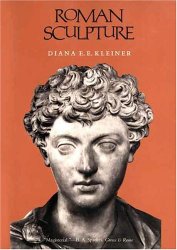$55.00
$55.00
(SAVE Now!)
as of 12/22/2024 (Details)
Roman sculpture was an integral part of Roman life, and the Romans placed statues and reliefs in their flora, basilicas, temples and public baths as well as in their houses, villas, gardens and tombs. In this illustrated book, Diana Kleiner discuses all the major public and private monuments in Rome, as well as many less well-known monuments in the capital and elsewhere in the empire. She examines art commissioned by the imperial elite as well as by private patrons, including freedmen and slaves and also highlights monuments honouring women and children. Kleiner demonstrates that the sociala, ethnic and geographical diversity of Roman patronage led to an art that was eclectic and characterised by varying styles, often tied to the social status of the patron, but she also examines the interrelations between works produced for different kinds of patrons. Kleiner begins with a long thematic introduction that describes Rome and its empire, characterises patrons from the capital and the provinces, discusses the position of the artist in Roman society and the materials he used, and presents a history of the study of Roman art. The remaining chapters constitute a chronological examination of Roman sculpture from the foundation of Rome in 753 BC to the transfer of the capital to Constantinople in AD 330. In each period the monuments are divided by type, for example portraiture, state relief sculpture, the art of freedmen and provincial art. Throughout, Kleiner treats Roman Sculpture in its cultural, political and social contexts and, wherever possible, as an element of the architectural commplex in which it was set.
Technical Details
No features available.